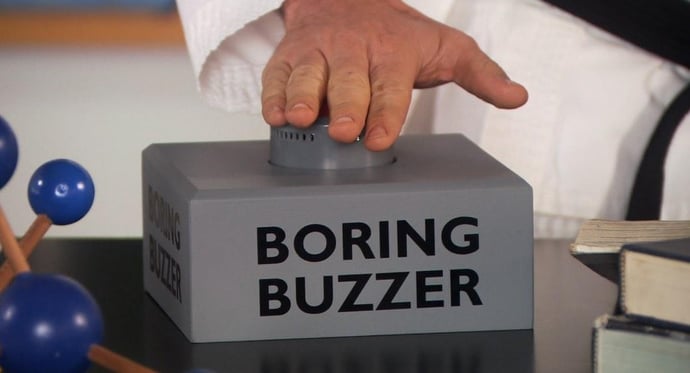


Sprinting towards growth - managing inbound marketing with Agile




About two years ago, just as things were really starting to ramp up for us as an inbound agency, we managed clients across the whole team. Everyone had a part to play.
For the first few clients, that was fine. However, as we started to grow, and the more inbound marketing campaigns we delivered, the more problematic that became.
We were starting to feel like we were in danger of dropping the ball, or plates, depending on your preference. We were at the point where we grow the team or slow the growth.
The obvious answer is grow the team. A healthy young agency with a positive cash flow can take the hit and bring on the salary. The problem with that is, this takes time. Recruitment, notice periods, internal training and general getting up to speed... it's not quick, unless you're really, really lucky.
As an experienced inbound marketing agency, we've worked with brands from all backgrounds to deliver bespoke inbound strategies across a variety of channel. We help people better identify and attract those who matter most to their growth ambitions. Want to know more? Read "Lessons from an inbound marketing agency".
Too many cooks, not enough ownership
So what's wrong with everyone being involved with the campaigns? Well, nothing, in part. The problem comes from not having a focal point, some ownership. If you have everyone involved and no one taking ownership, then it doesn't work. Things will inevitably get lost. Thing will fall through the proverbial cracks.
Secondly, if everyone is involved, you'll very quickly run out of capacity. It's simple maths.
Same old, same old
One other thing that scares me as an inbound marketing agency is that we somehow become complacent.
We've done some great work, we've even managed to notch up a cheeky couple of awards. But how do we keep that going? If we deliver the same work across the same projects in the same way, week in, week out... I have a limited attention span, but who in their right mind wouldn't get bored?

Boredom doesn't breed innovation. It doesn't lay the foundations for good work or a happy team. So how do we keep creating "new" and how do we install a drive to do better than the last time?
Always looking to improve (or make our lives easier)
I am a massive geek. I love playing with new toys (mostly tech), trying new processes, dabbling with new tools. I have spent many a Friday night stitching together APIs or mapping out a new strategy. I'm just that rock 'n' roll.
But with that comes an openness to trying new things. We had an issue, a bottleneck in our own growth, and we needed a way to fix it.
What is Agile?
Agile is a lot of things to a lot of people. I am not an expert in Agile, and I'm sure if we had a certified scrum master join us, they'd be horrified (or amazed) at how we've bastardised the process. But what Agile represents for us is a fast-moving adaptable project management process that drives us to learn and try new things.
It forces us to think on our feet (literally, our meetings are all conducted standing up) and it gives us a platform to try new things with our clients in a focused and structured way, iteratively on the back of what we've learnt. Each round not only improves the work delivered, but also the process delivering it.
Wikipedia dryly observes:
"Agile refers to an iterative, incremental method of managing the design and build activities of engineering, information technology and other business areas that aim to provide new product or service development in a highly flexible and interactive manner."
If you're interested, two books I would really recommend are "Sprint" by Jake Knapp and "Scrum" by Jeff Sutherland. They form the basis of everything we do, and both authors come at the subject from different angles.
Using Agile as an inbound marketing agency
When we first started looking at using Agile across the agency, I couldn't get my head around it. Every book and blog post I read, every podcast I listened to - they all describe using inbound on a single point of focus, a software release, a website, a mobile app. But that doesn't work for us.
At any given time, across the agency, we have at least fifteen ongoing projects. But stupidly, I was getting hung up on trying to run them as a single project. As soon as I realised all of our projects could be agile processes in their own right, it all started to click into place for us. Caveat, it's still not perfect, but that's the point.
Agile is very data driven. We test, we try, we learn. Pretty similar to the inbound marketing process, right?
So our strategy, just in case you care, looks a little bit like this:
- We look at the backlog - a list of all the things we've previously suggested as ideas to hit client KPIs.
- The account management team present last month's results, any changes to client KPIs and business goals, and client feedback on areas of focus.
- Internally, we workshop it. We get the Post-It notes out. We white board it. No idea is a bad idea. We go wide and then start to rein it back in (it's a classic divergence and convergence creative process)
- We prioritise the ideas based on the impact we think they'll have on the set KPIs, and on the time we have available on the campaign.
- We backlog the rest and present the month's sprint tasks to the client for approval.
- We do the work.
- Almost daily, we have our 5 minute "scrum meetings" where we ask three questions of the people involved:
- What did you do yesterday?
- What are you going to do today?
- What's getting in your way?
- We report back to the client.
So what has moving to Agile done?
Now that we've jumped on the Agile agency bandwagon, it's fixed a lot of ills.
We can do more with less. We created capacity by making expectation clear. We've given clients involvement and insight into what happens behind the scenes. They can see all the work we do now.
Tasks set [for the most part] stay on track with daily check ins. Each team member is also aware when there's a problem and able to help. The goal is always to finish the sprint, not to finish your individual tasks. We've also managed to start creating self sufficient teams.
But most importantly, we enjoy the work more. We get to try and suggest new things. It keeps it exciting.
Have you considered Agile as part of your business?
As an experienced inbound marketing agency, we've worked with brands from all backgrounds to deliver bespoke inbound strategies across a variety of channel. We help people better identify and attract those who matter most to their growth ambitions. Want to know more? Read "Lessons from an inbound marketing agency".








